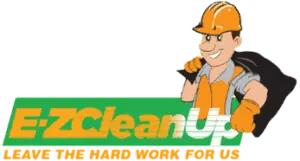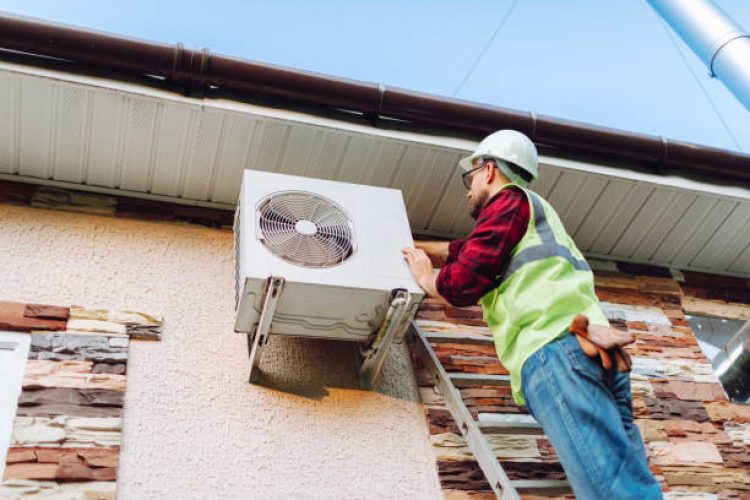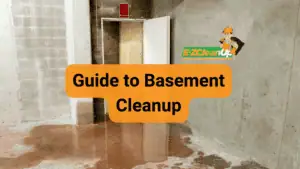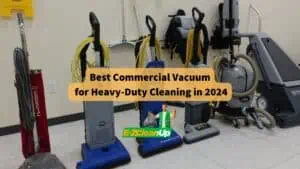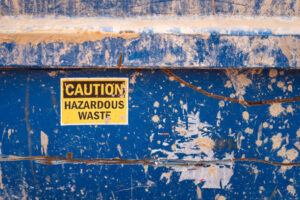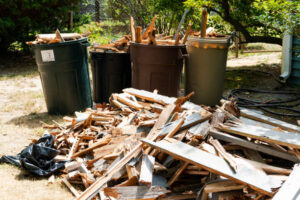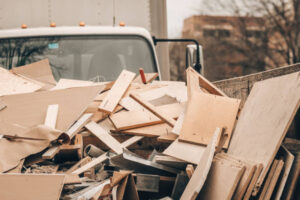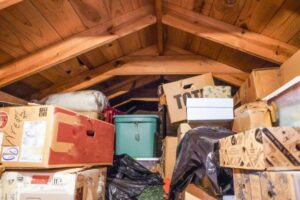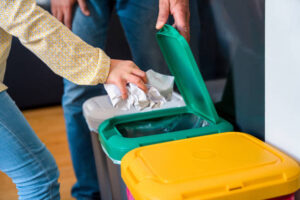Getting rid of old appliances isn’t as simple as dragging them to the curb. Whether you’re upgrading your refrigerator, replacing a worn-out washing machine, or disposing of that ancient air conditioner, understanding proper appliance removal guidelines is essential for legal compliance, environmental protection, and even potential tax benefits.
This comprehensive guide covers everything you need to know about appliance removal—from federal regulations to donation options.
Why Proper Appliance Disposal Matters
Household appliances such as refrigerators, freezers, window air-conditioning units, and dehumidifiers historically contained chlorofluorocarbons (CFCs) and hydrochlorofluorocarbons (HCFCs) used as refrigerant and within insulation foam—substances that are ozone-depleting and have been phased out under the Clean Air Act. Older appliances may also contain mercury, contaminated oils, and polychlorinated biphenyls (PCBs), which are hazardous substances that cause adverse ecological and human health effects.
Improper disposal can result in:
- Environmental contamination
- Legal penalties and fines
- Health hazards for waste handlers
- Lost opportunities for recycling valuable materials
Federal Regulations You Must Know
EPA Refrigerant Recovery Requirements
EPA regulations under Section 608 of the Clean Air Act include requirements for the safe disposal of refrigeration and air-conditioning equipment, designed to minimize refrigerant emissions when these appliances are disposed.
Key requirements include:
- Regulated refrigerants must be removed properly from refrigerant-containing devices before they are recycled or disposed
- The final person in the disposal chain (such as a scrap metal recycler or landfill owner) is responsible for ensuring that refrigerant is recovered from equipment before its final disposal
- If the final person accepts an appliance that no longer holds a refrigerant charge, that person is responsible for maintaining a signed statement from the person who dropped off the appliance, including the name and address of the person who recovered the refrigerant, and the date that the refrigerant was recovered
Hazardous Components Management
Hazardous components, including PCBs, mercury, and compressor oil, must be removed from appliances before disposal in accordance with 40 CFR Parts 273, 279, 761.
Official Resource: For detailed federal requirements, visit the EPA’s Appliance Disposal page and EPA’s Stationary Refrigeration Safe Disposal Requirements.
State and Local E-Waste Regulations
There are currently 25 states and the District of Columbia that have passed legislation related to electronics recycling, with several more states considering such legislation.
State-Specific Requirements
Different states have varying approaches to appliance and e-waste disposal:
- California: California passed the Electronic Waste Recycling Act of 2003 to encourage proper e-waste disposal, which led to the creation of the Covered Electronic Waste Recycling Program supporting the safe and responsible disposal of covered electronic devices
- New York: The NYS Electronic Equipment Recycling and Reuse Act requires manufacturers to provide free and convenient recycling of electronic waste to most consumers in the state
- Multiple States: All states except California and Utah use the Producer Responsibility approach, whereby the manufacturers pay for the costs of recycling
Local regulations often dictate where and how appliances can be disposed of, so always check with your municipality before scheduling removal.
Check Your State Laws: Visit state electronics recycling legislation resources for specific state requirements.
How to Properly Dispose of Different Appliances
Refrigerators and Freezers
Municipalities may require the refrigerant to be recovered from appliances before they will accept it for pick-up, requiring a professional such as an employee of an appliance repair shop to remove the refrigerant prior to disposal.
Steps for disposal:
- Contact your local waste management authority
- Arrange for certified refrigerant recovery
- Remove all food and clean thoroughly
- Schedule pickup or drop-off with an approved facility
Air Conditioners and Dehumidifiers
Similar to refrigerators, these appliances contain refrigerants that must be professionally recovered before disposal.
Washers, Dryers, and Stoves
These typically don’t contain refrigerants but may have other components requiring special handling:
- Disconnect properly from utilities
- Ensure all parts are secure for transport
- Clean thoroughly before donation or recycling
Donation Options for Working Appliances
If your appliances still work, donation is often the best option. All appliances must be in good working order before they will be accepted by most charitable organizations.
Top Donation Organizations
Habitat for Humanity ReStores
ReStores are retail outlets where quality used and surplus building materials are sold at a fraction of normal prices. Most locations offer free pickup services.
The Salvation Army
With thousands of locations nationwide, the Salvation Army accepts appliance donations and provides pickup services in most areas.
Local Thrift Stores
Many community thrift stores accept appliances in working condition and may offer pickup services.
Donation Guidelines
Most organizations won’t accept appliances over 10–15 years old. Before donating:
- Check manufacturer websites for safety recalls before donating
- Clean appliances thoroughly
- Ensure all parts and accessories are included
- Test to confirm proper operation
- Arrange pickup or drop-off in advance
Find Donation Centers: Visit Habitat for Humanity to locate a ReStore near you.
Recycling and Disposal Services
Municipal Collection Programs
While smaller appliances might fit in your trash bin, many municipalities and private waste collection companies prohibit throwing them away with regular trash—some companies will pick items up curbside for no charge or a minimal fee.
Contact your local waste management service to learn about:
- Special collection days
- Drop-off locations
- Curbside pickup options
- Associated fees
Professional Appliance Removal Companies
An appliance removal company will have a trained and insured team who’ll make sure your item is disposed of according to local guidelines. Appliance removal costs the average U.S. homeowner $100, with costs commonly ranging from $60 to $180.
Retailer Take-Back Programs
Some organizations or retailers offer appliance pick-up and disposal services with the purchase and delivery of a new piece of equipment—others may allow you to drop off the old appliance at the retail establishment at no charge, and some may even provide small vouchers or discounts in return for appliances.
E-Waste Recycling for Small Appliances
Small appliances like toasters, microwaves, and coffee makers often fall under e-waste regulations. In today’s tech-driven world, electronic waste (e-waste) is one of the fastest-growing environmental challenges.
Recycling options include:
- Electronics retailers (Best Buy, Staples)
- Municipal e-waste collection events
- Manufacturer take-back programs
- Certified e-waste recyclers
Learn More: Check the California DTSC E-Waste Information page for comprehensive recycling guidelines.
Cost Considerations
Free Options
- Municipal curbside pickup (in some areas)
- Retailer haul-away with new appliance purchase
- Donation pickup services
- Manufacturer recycling programs
Paid Services
- Professional junk removal: $$60–$$180 per appliance
- Special disposal fees for refrigerants
- Landfill or transfer station fees
- Hazardous waste disposal charges
Environmental and Tax Benefits
Environmental Impact
Over the course of its lifetime, the RAD program partnered with over 80 utility companies, retailers, manufacturers, and government agencies, processing over 9 million refrigerated appliances, avoiding emissions equivalent to the energy needed to power 5 million homes annually, recycling 1.5 billion pounds of materials, and safely disposing of over 543,000 internal components containing hazardous substances.
Tax Deductions
When you donate working appliances to qualified charitable organizations, you may be eligible for tax deductions based on fair market value. Always:
- Request a donation receipt
- Take photos of donated items
- Document condition and approximate value
- Consult a tax professional for guidance
Appliance Removal Checklist
Before scheduling appliance removal:
For All Appliances:
- ☐ Empty and clean thoroughly
- ☐ Remove personal items
- ☐ Check for recalls
- ☐ Determine if working or non-working
- ☐ Disconnect from utilities safely
For Refrigerated Appliances:
- ☐ Schedule refrigerant recovery if required
- ☐ Defrost completely
- ☐ Secure doors and shelves
- ☐ Obtain proper documentation
For Disposal:
- ☐ Research local regulations
- ☐ Contact municipality or disposal service
- ☐ Verify acceptance requirements
- ☐ Schedule pickup or drop-off
- ☐ Keep all documentation
For Donation:
- ☐ Confirm appliance is in working order
- ☐ Test all functions
- ☐ Clean thoroughly
- ☐ Gather accessories and manuals
- ☐ Contact charity and schedule pickup
- ☐ Get donation receipt for taxes
Conclusion
Proper appliance removal requires understanding federal regulations, state laws, and local requirements. Whether you’re disposing of refrigerated appliances with strict EPA guidelines or donating working units to charity, following proper procedures protects the environment, ensures legal compliance, and can even provide tax benefits.
The key is planning ahead: research your options, understand what regulations apply to your specific appliances, and choose the disposal method that best fits your situation—whether that’s donation, recycling, or professional removal services.
By following these appliance removal guidelines, you’ll contribute to environmental protection while efficiently clearing space in your home.
